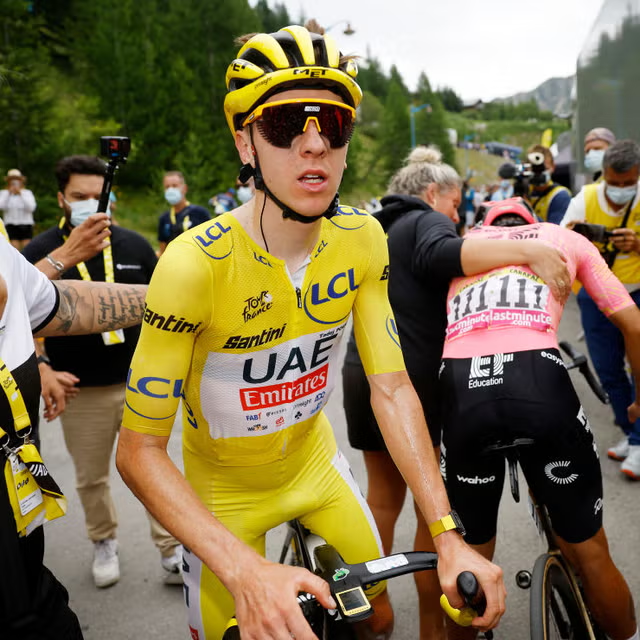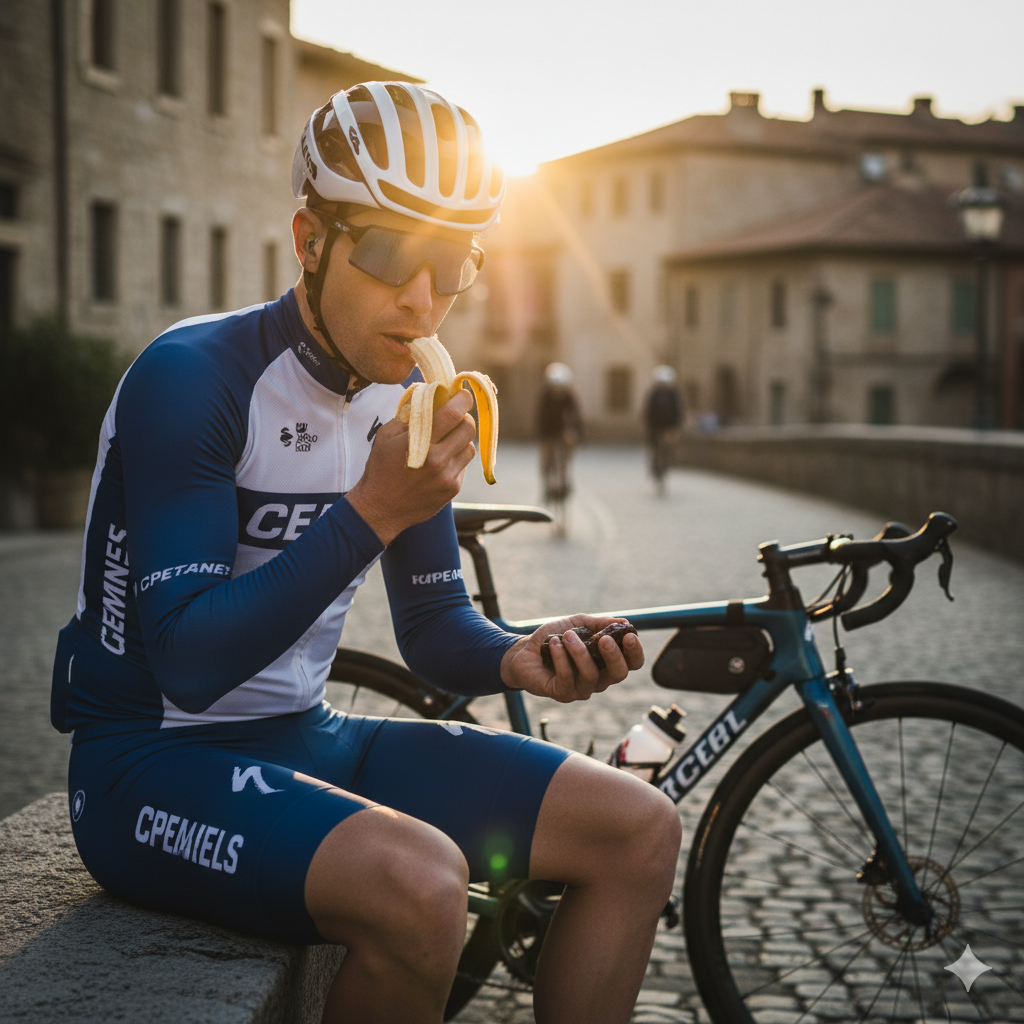The Best Fluffy Pancakes recipe you will fall in love with. Full of tips and tricks to help you make the best pancakes.
Road Cycling Fueling Mistake That Slowly Destroys Endurance
Avoid the #1 road cycling fueling mistake that ruins riders. Learn smarter nutrition strategies to boost endurance and recovery.
The call comes at some ungodly hour—2 AM? Maybe 3? Time blurs when you’re listening to someone’s dreams crumble. Another promising cyclist, been at it for three years now, and their voice… God, you can hear the defeat seeping through the phone. “I don’t get it, man. Like, I’m putting in more miles than my buddies. Following Zwift workouts to the letter. But I’m getting weaker—actually weaker—and I feel like garbage all the time.” That’s the typical Road Cycling struggle in Fueling.
This isn’t some genetic lottery nonsense. Not about having the “wrong” body type or whatever excuse people use these days. And it sure as hell isn’t because they’re not grinding hard enough (trust me, they are).
No—this is about one catastrophic screw-up made in those first few rides. A mistake that spreads like some metabolic cancer, poisoning every training session, every weekend adventure, every half-hearted attempt at racing until… well, until they quit. Which most do.
The mistake? They started fueling like Pogačar on a mountain stage when they should’ve been learning to ride like, well, normal humans.
The Instagram Lie That’s Killing Cyclists

Here’s what’s messing everyone up (and I mean everyone): 95% of newbies—maybe more—make this identical error in their first month. They scroll through social media, binge-watch GCN videos at midnight, lurk on r/cycling forums, and somehow convince themselves that if they want to be fast… they need to eat like the fast guys.
The reasoning sounds bulletproof: “Want to ride like a pro? Fuel like a pro.” Makes perfect sense, right?
Wrong. So catastrophically wrong it’s almost funny. Almost.
Here’s the thing about those WorldTour monsters—guys like Van der Poel or Vingegaard—they’re operating on a completely different planet. We’re talking 350+ watts for hours on end. HOURS. Their digestive systems have been rebuilt through years of systematic torture. They can slam 90 grams of carbs per hour and their stomachs just… handle it. Like it’s nothing.
You know what happens when a new cyclist tries that approach? (I’ve seen it a hundred times, maybe more.)
Reality Check: You’re Not Tadej

When you first clip in—and I remember this vividly from my own Day One disaster in 2019—your body works completely differently. Your glycogen storage? Modest at best. Your gut? About as adapted to high-carb loading as a toddler is to espresso shots. Your fat-burning machinery? That’s actually your secret weapon, but nobody talks about that anymore.
But here’s where it gets really ugly: over-fueling doesn’t just waste your money on those ridiculously overpriced gels (seriously, $3 for sugar water?). It actively sabotages the very adaptations that would make you… I don’t know, actually good at this sport.
Think about it—every time you flood your system with external carbs from Day One, you’re basically telling your body: “Hey, don’t worry about getting efficient at burning fat. I’ve got you covered with this constant IV drip of maltodextrin.”
Your metabolism learns to be lazy. Dependent. Fragile as spun glass.
I watched this happen to my neighbor Jake (great guy, terrible at listening). Started cycling during the pandemic lockdowns—you know, that weird time when everyone suddenly bought bikes? Anyway, Jake read somewhere that you need 60-80g of carbs per hour, so he’s out there on 45-minute rides carrying more nutrition than I take on century rides. Fast forward two years: the dude can’t ride to the coffee shop without bonking. Meanwhile, his wife Sarah—who started the same time with just water bottles—she’s out there crushing 3-hour rides on nothing but determination and maybe a banana.
The Compound Interest of Bad Decisions
This isn’t just about ruining one ride (though it does that too). This mistake shapes your entire… trajectory feels too clinical. Your whole cycling story, let’s say.
Month after month, instead of building metabolic flexibility—that beautiful ability to switch between fuel sources like a hybrid car—you’re becoming increasingly brittle. More dependent. More anxious about fueling timing.
Your training partners who got it right? They’re developing this almost supernatural efficiency. Riding longer on less fuel. Recovering faster (which, honestly, is half the battle in this sport). Maintaining steady energy throughout rides that would leave you crawling for a convenience store.
By year three—and this is where it gets heartbreaking—the gap becomes… well, insurmountable might be too strong, but it’s massive. You’re carrying a pharmacy of nutrition products, spending more on fuel than some people spend on groceries, dealing with stomach issues that would make a gastroenterologist rich, and somehow performing worse than people who just… got Day One right.
It’s like compound interest, but in reverse. Every bad fueling decision compounds into the next one.
The Right Way (Finally)

Okay, enough doom and gloom. Let’s fix this. Today. Right now.
Rides under 90 minutes: Water. That’s it. Just water.
I can hear you protesting already: “But what if I bonk? What if my blood sugar crashes? What if—”
Stop. Your glycogen stores can handle 90 minutes easily in a road cycling session. This isn’t torture; it’s training your fat oxidation pathways. Building confidence in your body’s natural systems.
90 minutes to 2.5 hours: One piece of real food per hour after the first 90 minutes. I’m talking actual food here—not some lab-created gel that tastes like sadness mixed with artificial strawberry. A banana. Some dates (underrated fuel, by the way). Half a PB&J sandwich.
Real food provides steadier energy release. Doesn’t overwhelm your digestive system. Doesn’t create that weird psychological dependency on branded sports nutrition.
Over 2.5 hours: Now—and only now—can you start thinking about sports nutrition. But we’re talking 30-40 grams of carbs per hour max for your first six months. Your gut needs time to adapt, like breaking in new cycling shoes but for your intestines.
This approach does multiple things simultaneously (which, admittedly, makes it harder to explain but more effective to implement). You’re training fat oxidation. Gradually expanding digestive capacity. Building genuine metabolic resilience.
Plus—and this might sound weird—you start to enjoy the actual experience of riding instead of constantly managing fuel anxiety.
The Mental Game Nobody Talks About
Getting Day One fueling right creates this… shift. Hard to describe exactly, but instead of feeling dependent on perfect nutrition timing—like some high-maintenance sports car that needs premium cycling fuel every 50 miles road —you develop genuine confidence.
Not the brittle confidence that comes from having the “right” products in your jersey pockets. Real confidence. The kind that comes from knowing your body can handle various conditions, different ride lengths, unexpected route changes.
I remember the first time I completed a 4-hour ride on minimal external fuel—just felt… powerful, I guess? Like I’d unlocked some secret about my own capabilities.
Your Fork in the Road (Literally)
Look, you’re standing at a crossroads here. Down one path—the popular path, the one most cyclists take—lies this seductive but ultimately destructive approach of copying elite cycling fueling strategies from Day One.
That path leads to metabolic dependency. Digestive rebellion. Performance plateaus that feel like hitting invisible walls. Eventually, frustration with the entire sport.
The other path? Strategic restraint. Progressive development. Building actual metabolic fitness instead of dependency.
It’s not as Instagram-worthy. You won’t have photos of your perfectly arranged gel collection. But you’ll still be riding strong in ten years while others have moved on to pickleball or whatever the next fitness trend becomes.
Don’t become another casualty of the Day One Mistake.
Start minimal. Progress gradually. Build the foundation. Your future cycling self—the one still hammering up climbs at 60—will thank you for getting this right from the beginning.
Every ride with wrong fueling strategy pulls you further down the wrong path. Like compound interest, but for metabolic dysfunction.
The choice is yours. Make it count.
Check our Cycling Nutrition & Recipes Guide to Have a full understanding of how ACTUALLY eat as a cyclist.





